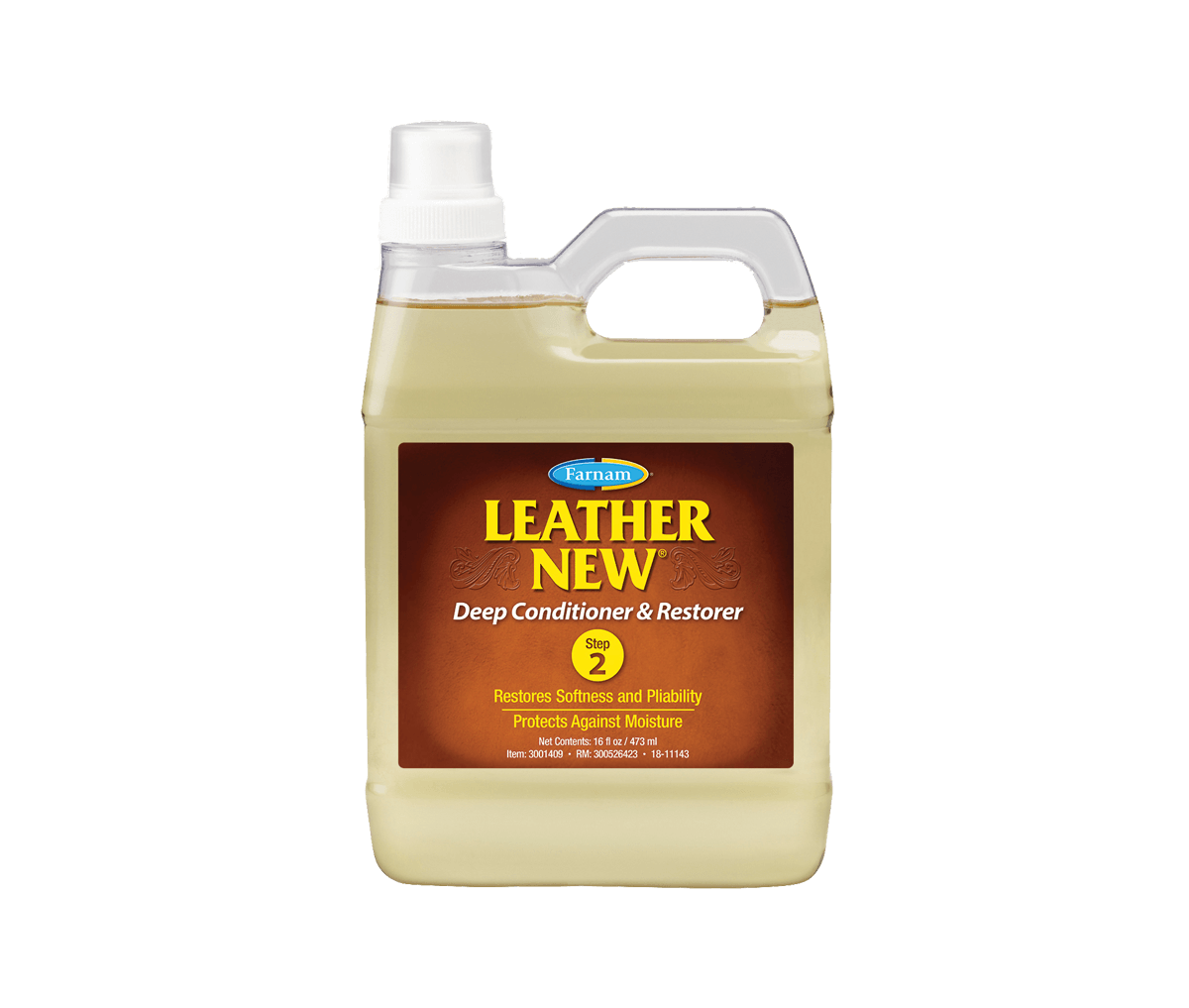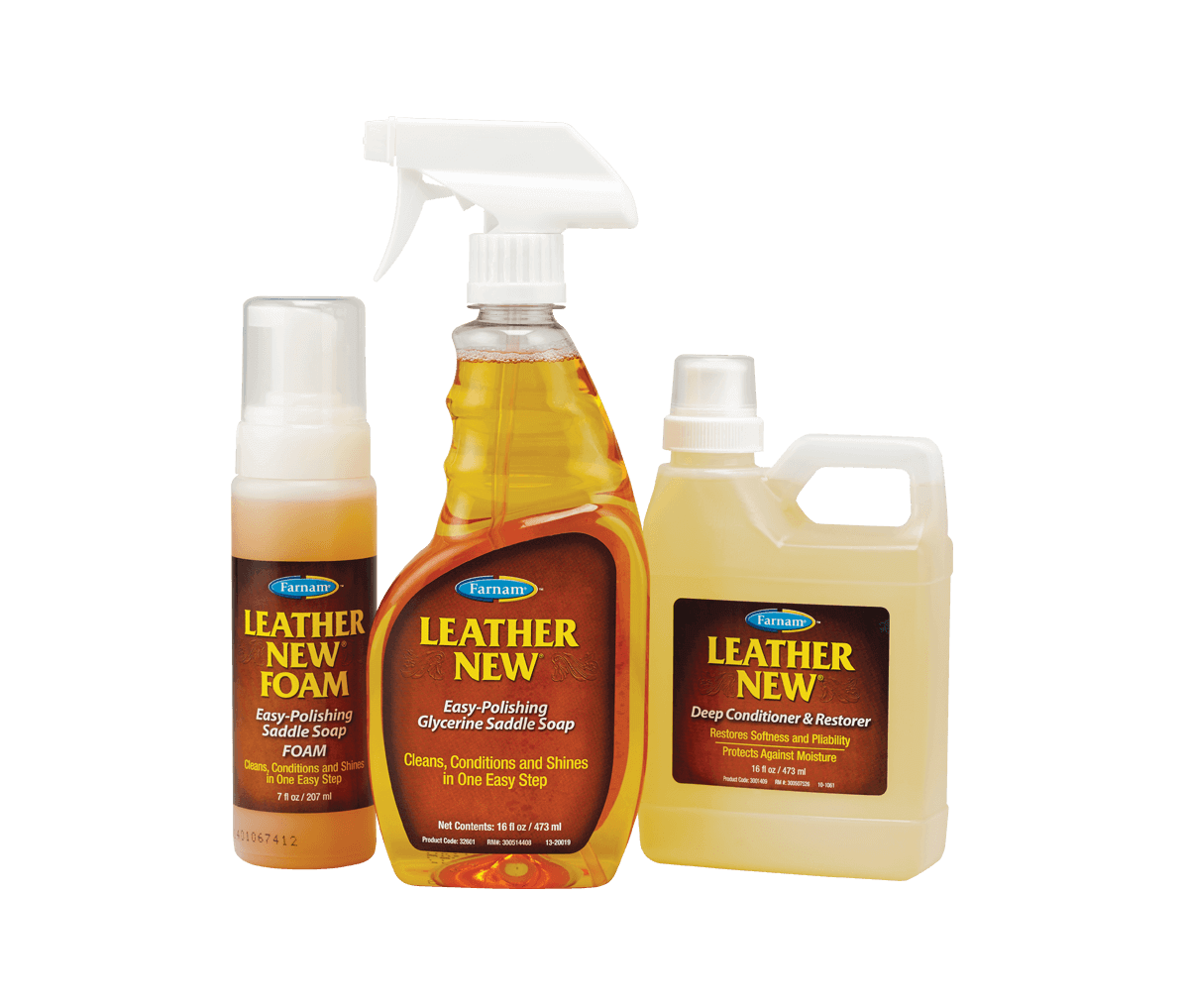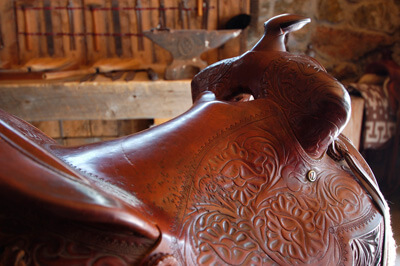Tips on Cleaning and Storing Tack to Make It Last Longer

A good-quality, well-made saddle can last your lifetime — or longer. Take care of it now and you just might need to include it in your will for some lucky relative.
Once you’ve purchased a good piece of leather tack, there are simple things you can do to get your money’s worth out of it.
Keep It Clean
Regular cleaning is paramount. Use water-based products designed to clean and condition the leather. Ideally, you would clean tack after every ride, but that’s not practical for most people. If you at least wipe down all leather with a clean cloth each time you use it, this will remove sweat and dirt that can irritate your horse’s skin and damage the leather. Then make a point to clean it thoroughly every few rides. Whether you use a sponge or cloth to clean tack, use plenty of elbow grease, but as little water as possible.
In addition, use a leather conditioner periodically for deep conditioning, even if you clean tack frequently. A conditioner will help restore softness and keep the leather pliable, which will add to its life.
Inspect your tack carefully each time you clean it so you can make any necessary repairs in a timely manner. Pay attention to places where leather and hardware touch, and where leather is bent back over itself. Look for cracks, tears or torn stitching. For safety’s sake, if you find any cracks in a leather latigo, replace it before your next ride. With an English saddle, be sure to check the highest wear points, which are the billets and the saddle flaps. To get more mileage out of the saddle, billets can be replaced and a leather patch sewn onto the flaps.
Many reputable tack repair shops will refurbish saddles. They will take the saddle apart and clean and oil all the pieces of the saddle before putting it back together. This can be a good option if your saddle needs more attention than you are able to give it with general cleaning and conditioning.
Store It Right
A mistake many people make after riding is placing a still-damp saddle pad or blanket on top of their saddle. Salt from the sweat can damage the leather, so be sure your saddle pad is allowed to air dry away from the saddle. If you use a contoured pad, don’t leave it upside down to dry because this can affect the pad’s shape.
A climate-controlled environment is best for tack, since temperature extremes — including humidity and extremely dry heat — take a toll on leather. Dry heat will make leather brittle, while humidity can cause it to mold and mildew.
If you aren’t going to be using leather tack for a while, don’t store it in a plastic bag or plastic trunk. Leather needs to “breathe” and can “sweat” in an airtight container. And it goes without saying that tack should always be clean and thoroughly dry before you store it away.
Make Tack Last Longer
• Buy quality leather items in the beginning
• Opt for synthetic thread over cotton
• Do safety inspections of tack every time you clean
• Check all wear points and hardware attachments
• Repair or replace any leather pieces that show undue wear, cracks, tears, torn stitching
• Don’t oil leather tack unless it’s completely dry
• Keep leather tack in a climate-controlled environment
• Don’t place wet saddle pads on top of saddles
• Don’t store leather equipment until it has been thoroughly cleaned and is totally dry
• Never store leather in plastic bags or airtight containers
Life with Horses Newsletter
Sign up now to stay connected with free helpful horse care tips, product updates, and special offers.




